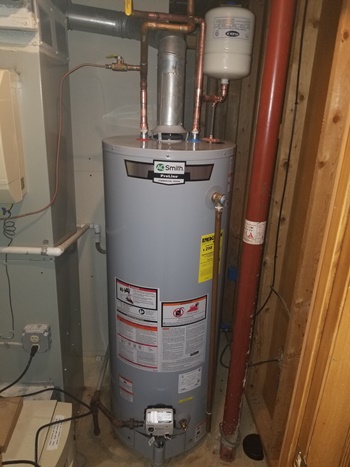Best Practices for Caring for Your Home's Hot Water SystemSimple Guide to Caring for Your Home's Hot Water SystemExpert Tips on Caring for Your Home's Hot Water System
Best Practices for Caring for Your Home's Hot Water SystemSimple Guide to Caring for Your Home's Hot Water SystemExpert Tips on Caring for Your Home's Hot Water System
Blog Article
Are you currently trying to find advice concerning Water Heater Maintenance Tips You Can't Afford to Forget?

Hot water is vital for daily comfort, whether it's for a refreshing shower or washing meals. To guarantee your hot water system runs effectively and lasts much longer, regular maintenance is key. This short article provides useful pointers and insights on exactly how to maintain your home's warm water system to prevent interruptions and costly fixings.
Introduction
Preserving your home's hot water system may seem daunting, however with a few basic actions, you can ensure it runs efficiently for several years to come. This guide covers whatever from understanding your hot water system to DIY upkeep tips and understanding when to hire expert help.
Value of Keeping Your Warm Water System
Regular upkeep not only expands the life-span of your warm water system yet additionally ensures it operates successfully. Neglecting maintenance can result in reduced effectiveness, higher power bills, and even premature failure of the system.
Indications Your Hot Water System Needs Maintenance
Knowing when your warm water system requires interest can avoid major issues. Look out for indicators such as irregular water temperature level, unusual sounds from the heater, or rusty water.
Flushing the Hot Water Heater
Purging your hot water heater removes debris build-up, enhancing effectiveness and extending its life.
Checking and Replacing Anode Rods
Anode rods avoid deterioration inside the storage tank. Checking and changing them when worn out is vital.
Complicated Concerns Needing Specialist Help
Instances include major leaks, electric troubles, or if your water heater is consistently underperforming.
Regular Expert Upkeep Advantages
Professional maintenance can consist of detailed examinations, tune-ups, and making sure compliance with safety and security requirements.
Examining and Adjusting Temperature Level Setups
Adjusting the temperature setups guarantees optimum efficiency and safety.
DIY Tips for Maintenance
You can execute a number of upkeep tasks yourself to keep your hot water system in leading problem.
Checking for Leakages
On a regular basis evaluate pipelines and connections for leaks, as these can bring about water damage and greater expenses.
Recognizing Your Warm Water System
Before diving right into upkeep tasks, it's practical to understand the basic parts of your warm water system. Typically, this includes the water heater itself, pipelines, anode rods, and temperature level controls.
Regular Monthly Maintenance Tasks
Regular regular monthly checks can aid capture minor concerns before they intensify.
Examining Stress Relief Valves
Examining the pressure relief valve ensures it works appropriately and avoids excessive stress accumulation.
Shielding Pipes
Insulating hot water pipes reduces warmth loss and can conserve power.
When to Call a Professional
While do it yourself maintenance is beneficial, some issues call for specialist expertise.
Conclusion
Normal maintenance of your home's hot water system is important for efficiency, long life, and price financial savings. By following these pointers and understanding when to look for expert aid, you can make sure a trustworthy supply of hot water without unanticipated interruptions.
Water Heater Maintenance: The Basics
Maintaining your water heater will ensure it operates efficiently and has a longer lifespan. Neglecting regular maintenance can lead to costly repairs and an even bigger chunk of your savings if you have to replace it sooner than necessary. But there’s good news: Most water heater maintenance tasks are relatively simple and easy for homeowners with basic DIY skills.
Flush the Water Heater
Over time, sediment and minerals can build up in the tank, reducing its efficiency and potentially causing damage. To flush the tank, turn off the power or gas supply, attach a hose to the drain valve near the bottom and open the valve to drain the water until it runs clear. Ideally, flush the tank annually.
Replace the Anode Rod
The anode rod is a sacrificial metal rod that helps prevent corrosion inside the tank. Inspect and replace it every three to five years or per the manufacturer's recommendation. To replace the anode rod, turn off the power or gas supply, drain a few gallons of water from the tank, unscrew the old rod and replace it with a new one. If the anode rod is significantly corroded or covered in calcium buildup, it's a sign the water heater may need to be replaced soon.
Tune-Up
A yearly tune-up can help identify potential issues and ensure your water heater operates at peak efficiency. This typically involves checking the thermostat, burner assembly (for gas heaters) and any other components specified by the manufacturer. During a tune-up, the technician may also clean the burner and adjust the pilot light (for gas heaters) or examine the heating elements (for electric heaters).
How to Maintain Your Water Heater
Insulate the tank. Insulating the tank can improve energy efficiency and reduce heat loss, saving you money on energy bills. You can purchase precut insulation blankets designed specifically for water heaters or use standard fiberglass insulation wrapped securely around the tank. Check the temperature. The recommended water temperature for most households is around 120 degrees Fahrenheit (49 degrees Celsius). Higher temperatures can increase energy costs and potentially cause scalding. Use a kitchen thermometer to check the temperature at the faucet nearest the water heater. Monitor water pressure. Excessive water pressure can strain the water heater and cause leaks or even tank failure. Install a pressure-reducing valve if necessary. The ideal water pressure range is between 60 and 70 PSI (pounds per square inch). Test the temperature and pressure (T&P) relief valve. The T&P relief valve is a safety feature that releases pressure if the tank gets too hot or the pressure builds up too high. Test it annually by lifting the lever and allowing a small amount of water to release. Replace the valve if it doesn't release water or reseal properly. Check for leaks. Regularly inspect the tank, pipes and fittings for leaks or corrosion. Deal with issues promptly to prevent further damage. Even a small leak can lead to significant water damage over time. Consider a tankless water heater. If your traditional tank-style water heater is nearing the end of its lifespan ( typically 10 years), consider replacing it with a tankless water heater. These units heat water on demand, reducing standby energy losses and potentially saving you money on your energy bills. Schedule professional maintenance. While homeowners can perform many water heater maintenance tasks, it's still a good idea to schedule professional maintenance every few years. A plumber or HVAC technician can thoroughly inspect the unit, identify potential issues and ensure it operates safely and efficiently. https://www.homeserve.com/en-us/blog/home-improvement/hot-water-heater-maintanence/

We had been introduced to that editorial about Water Heater Maintenance Tips You Can't Afford to Forget through a pal on a different blog. Sharing is good. One never knows, you may very well be doing someone a favor. Thanks for your time invested reading it.
Visit My Website Report this page